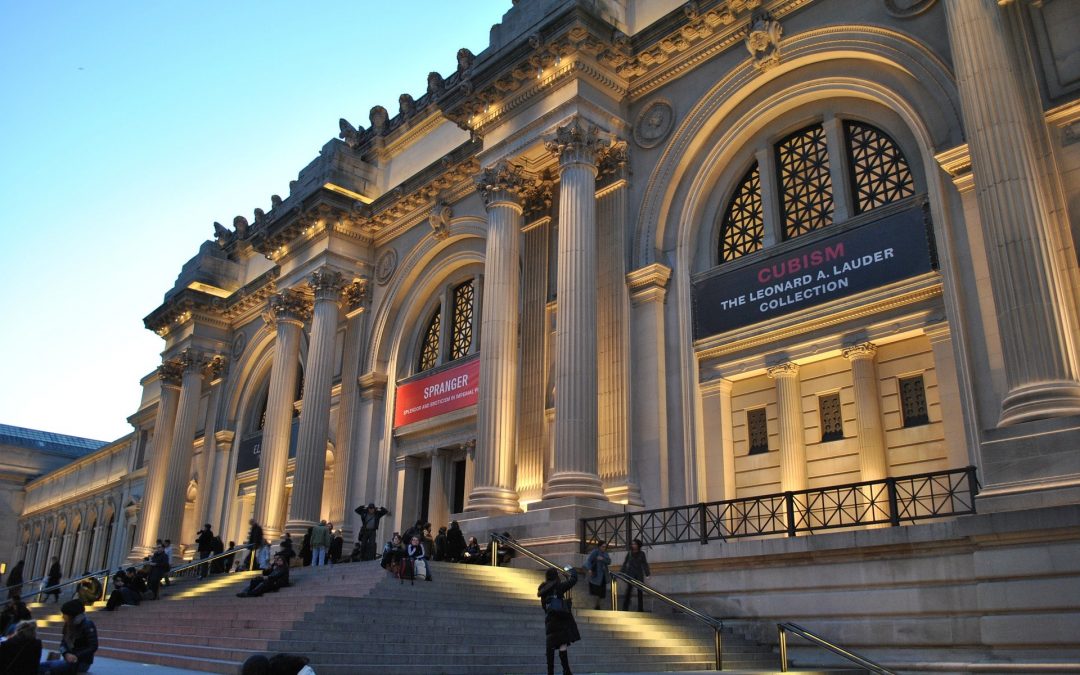
by BCB Property Management | Dec 5, 2017 | Neighborhoods
Summer weather is a distant memory by now, but NYC’s best museums have tons of great exhibits to get us through the winter. In a city with a huge range of things to do and see, these presentations show why these museums are cherished by New Yorkers old and new. Check out some of the featured collections that will make trekking through the cold well worth it in 2018.
Museum of Modern Art – Thinking Machines: Art and Design in the Computer Age
New York’s premier Modern Art museum can always be relied upon for a look at the most cutting-edge and thought-provoking works, and this exhibit running until April 8 is no exception. Thinking Machines gathers artworks designed by computer software and even formulated with artificial intelligence. This collection promises a fascinating look at the implications of computer learning-if they can create art, what else are machines capable of?
Metropolitan Museum of Art – Celebrating the Year of the Dog
What better way to ring in the year of the dog than an artistic tribute to our four-legged friends? Humankind’s best friend for millennia, dogs have inspired artisans and artists throughout history, appearing in everything from practical metalworks to regal earthenware statues. Visitors to the collection are sure to gain a newfound appreciation for their loyal pooches. This exhibit gathers a wide spectrum of East Asian canine pieces from the Met’s extensive archives just in time for the Lunar New Year on February 16.
Museum of the Moving Image – Video Arcade
In their heyday, video arcades were the premier place to discover the latest and greatest games. While that action has moved to our living rooms, visitors to the Museum of the Moving Image can step back in time into a faithful recreation of the fun centers of the 1980s (minus the cigarette smoke). Games ranging from early classics like Defender and Frogger sit here alongside 90s favorites Mortal Kombat and NBA Jam, making this interactive exhibit a mecca for gamers of any age. Arcades like this are a thing of the past, and this exhibit will be the same at the end of January 2018. So gather up those quarters and hop the R train to Astoria before it’s too late!
Museum of the City of New York – Mod New York
1960s counterculture lives in NYC in 2018, thanks to this exhibit featuring the fashions that shocked one generation and thrilled another. The Mod look, originating in London, hit its stride on these shores with even First Lady Jackie Kennedy (she of Hamptons high society) trying on the revolution in self-expression. In addition to an extensive clothing collection, talks and film screenings bring the spirit of the anything-goes 1960s to the Museum’s Upper East Side address through April 1.
New York Public Library – Picturing the City: Illustrated Maps of NYC
The evolution of New York City is an endlessly fascinating subject for many, and this exhibition gives visitors a bird’s-eye view of those changes. Curated by historian and author Katherine Harmon, Picturing the City promises an illuminating look at the entire history of Manhattan’s growth from Dutch trading post to the cultural capital of the world. A special emphasis on creative maps adorned with rich illustrations and the character of the city makes what could be a dry presentation to a fun and engaging survey of shifting attitudes and the unique character of the streets of NYC.
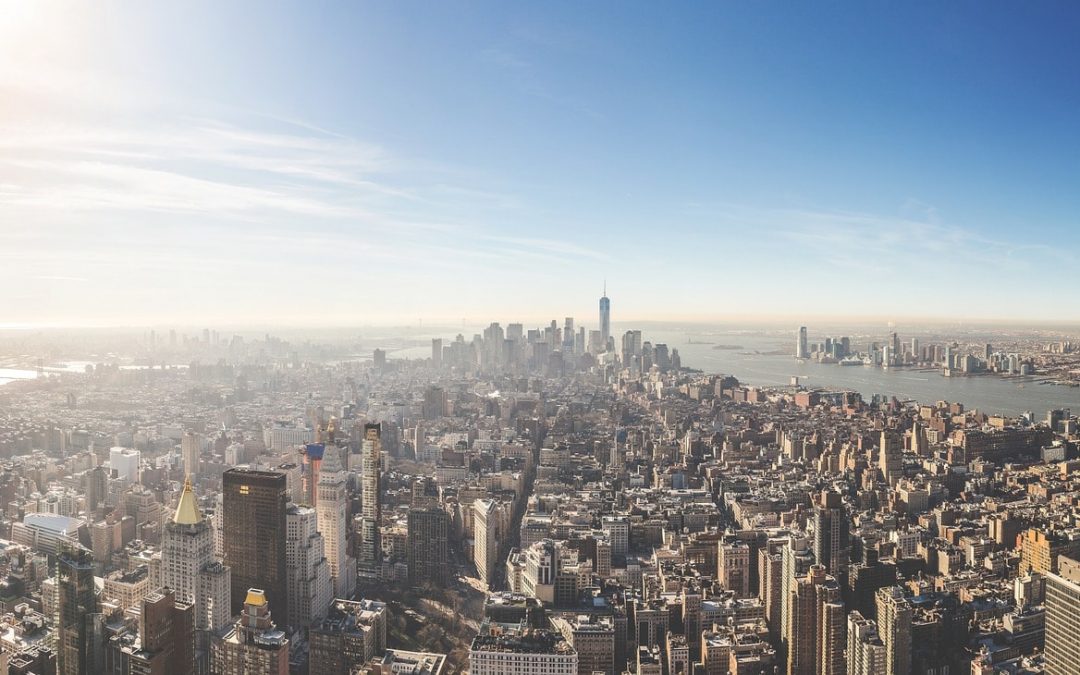
by BCB Property Management | Sep 1, 2017 | Neighborhoods, New York City
Any New Yorker can tell you that this is a city defined by its wide variety of neighborhoods. Across all the boroughs, every distinct enclave has its own character and personality, not to mention history. Making your way in and around the city starts with a working knowledge of its diverse assortment of neighborhoods.
Founded as a Dutch colony, many of New York City’s neighborhood names date back to that time. The Dutch may have left after the British took control of the city and renamed it from New Amsterdam, but labels such as Brooklyn and The Bronx (derived from the Dutch names Breukelen and Bronck) still remain as reminders of the city’s roots. Not surprisingly, many neighborhoods retain the names they’ve had since those early colonial days.
Harlem
A cultural touchstone not just for the city but for the entire United States, Harlem is one of New York’s best-known neighborhoods. This home of legendary artists, poets, and attractions like the Apollo Theater and the Cotton Club was once an outpost for Dutch settlers who needed a space to stay far from New Amsterdam at the southern tip of Manhattan island. This safe haven was dubbed Nieuw Haarlem by Governor Peter Stuyvesant, after the Dutch city a short distance from the original Amsterdam. Once the Dutch left New York, the name was anglicized to just “Harlem.”
Astoria
Many streets of New York, such as Dyckman in Upper Manhattan and Schermerhorn in Brooklyn, were named for wealthy denizens of the area, whose properties defined those surroundings. For someone with the fortune of John Jacob Astor, just a street wouldn’t suffice. The neighborhood formerly called Hallett’s Cove was never actually home to the fur trader or his family, but given the label in order to attract him to invest in the Queens district. It didn’t quite work (he only invested $500) but the name stuck.
Red Hook
This maritime district has always been defined by the port and shipping that made Brooklyn one of the country’s busiest regions. Red Hook comes from the Dutch “roode hoek,” referring to the red clay soil of the neighborhood (long since buried under concrete roads) and the geographical point jutting out into Upper New York Bay. Interestingly enough, the “hook” of Red Hook refers to the Dutch word for “point” or “corner,” not any actual hook-like geographical feature.
Coney Island
It wasn’t only geographical features that inspired Dutch settlers in naming their new territories. This former beachfront getaway, home to the famed Cyclone and Wonder Wheel, got its name from the Dutch word conyne for “rabbit” after the wild rabbit population that lived on what was then an actual island, with a river separating it from the mainland. Shifting sediments attached the island to the rest of Brooklyn while rifle-toting settlers did away with the rabbits, but the Coney Island name remains.
Turtle Bay
Unlike Coney Island, this neighborhood wasn’t identified by any animal population. Rather, Turtle Bay got its name from the Dutch word deutal, or knife. Early settlers of the bay (which was filled in after the Civil War, allowing for further buildings eventually including the United Nations complex) noticed a resemblance to a bent knife and named the bay accordingly. Thanks to its proximity to the UN, Turtle Bay is now home to many foreign consulates, making it one of the more plainly diverse regions of the city.
Rockaway
The Dutch weren’t the only ones who gave names to the various neighborhoods of the city. Several of them, in fact, descend from the language of the Lenape tribe, the area’s indigenous inhabitants. Queen’s beachfront peninsula, a distinct part of the NYC map, got its name from the old Lenape word “rack-a-wakee,” whose meaning is not certain but is thought to mean “place of sands.” Also behind the names of Canarsie in Brooklyn and of course Manhattan, this language is one of many that makes New York City the unique melange of cultures famed worldwide.
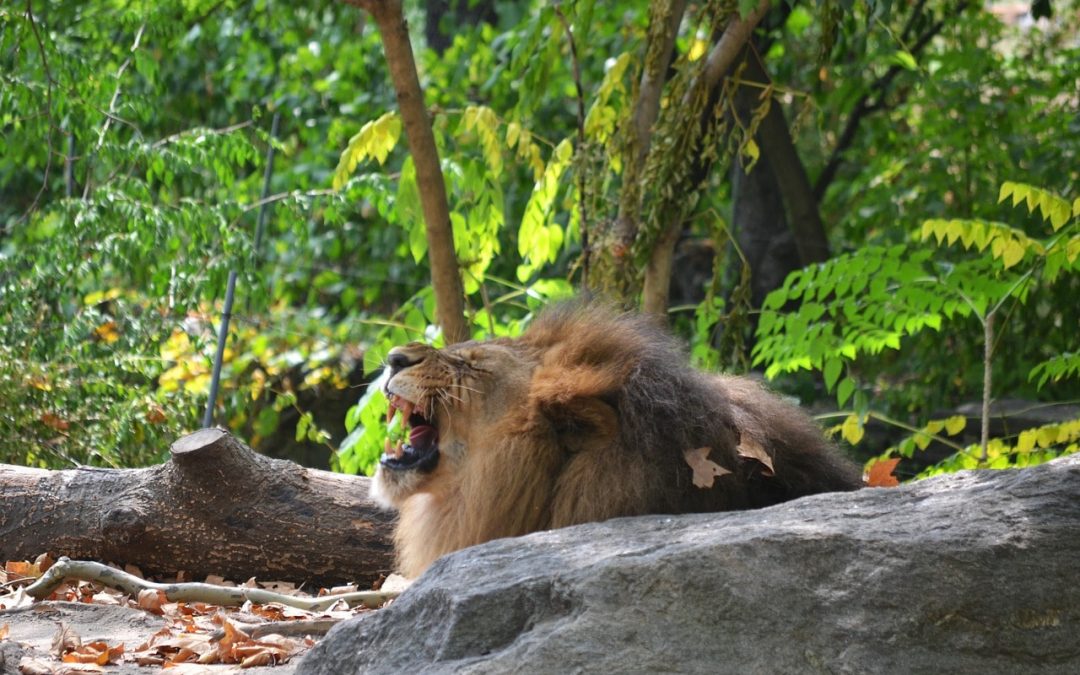
by BCB Property Management | Aug 16, 2017 | History
In the midst of the country’s foremost urban jungle, an oasis of plants and wildlife collected from around the world has thrived for over 100 years and counting. The Bronx Zoo is one of the city’s crown jewels, attracting over 2 million visitors to the northernmost borough every year. In a city best known for gridlock and nonstop action, the zoo has been a haven of intrigue and discovery for several generations of New Yorkers.
The Bronx Zoo’s story began in 1895 as the brainchild of the newly formed New York Zoological Society (now known as the Wildlife Conservation Society). The society came together with the explicit aim of building a top-quality zoo to complement the city’s celebrated museums and parks. Work soon began on identifying an appropriate site with enough space but not too far for city residents to visit.
By 1898, the newly consolidated City of New York allotted a plot of land in the Bronx to become a wildlife preserve and the following year the New York Zoological Park opened at the Fordham Road site. It was an immediate sensation, attracting thousands of curious guests to see the 843 animals on display. Today, that number has grown to over 4,000 representatives of more than 650 different species, still capturing imaginations of visitors young and old.
The zoo was among the first to consider exhibiting animals outside of restrictive cages, opening their African Plains showcase in 1941, a new kind of exhibit where animals freely intermingled and explored a recreation of the serengeti. This groundbreaking exposition not only offered a thrilling naturalistic display but imparted visitors with an understanding of the importance of preserving animals’ native habitats. The zoo’s Wild Asia did the same thing in an Eastern setting starting in 1977, with 77 acres of roaming space viewable by elevated monorail.
Over the years, the zoo has been home to some truly rare specimens. It’s only one of two zoos in the United States to have exhibited the thylacine, a now-extinct doglike marsupial from Tasmania. Their last thylacine died in 1919, and the species’ last known individual died in captivity in 1936.
Perhaps the zoo’s best known species have been their snow leopards, first exhibited in 1903. Over 70 of the endangered white cats have been bred at the Bronx Zoo, making it their foremost sanctuary in the United States. They’re far from the only rare species to call the zoo home, however, with Chinese Alligators, Kihansi Spray Toads, and Yellow-Headed Box Turtles all calling the Bronx their birthplace over the years.
The successful 20th century effort to revive the American Bison has much to owe to the zoo as well. The zoo’s original director William T. Hornaday cofounded the American Bison Society in 1905, and set about breeding the animal in the Bronx Zoo’s confines. Two years later, the zoo was able to send 15 bison to a preserve in Oklahoma, where a thriving colony exists to this day.
The zoo boasts some remarkable non-animalian features as well. The famed Rockefeller Fountain on the park’s north side, brought to the United States from Como, Italy by oil baron William Rockefeller, is a designated New York City Landmark, as are the bronze Rainey Memorial Gates decorating the zoo’s north entrance. Architectural enthusiasts will also appreciate the historic beaux-arts buildings of Astor Court, including the Elephant house and the zoo’s main administrative building.
In a city that boasts soaring buildings and cutting edge works of art, there’s no experience quite like the thrill and wonder housed in the 250 acres of the Bronx Zoo. Whether a leisurely visit or a lifetime residency, no time spent in New York City is complete without visiting the city’s wildest residents.
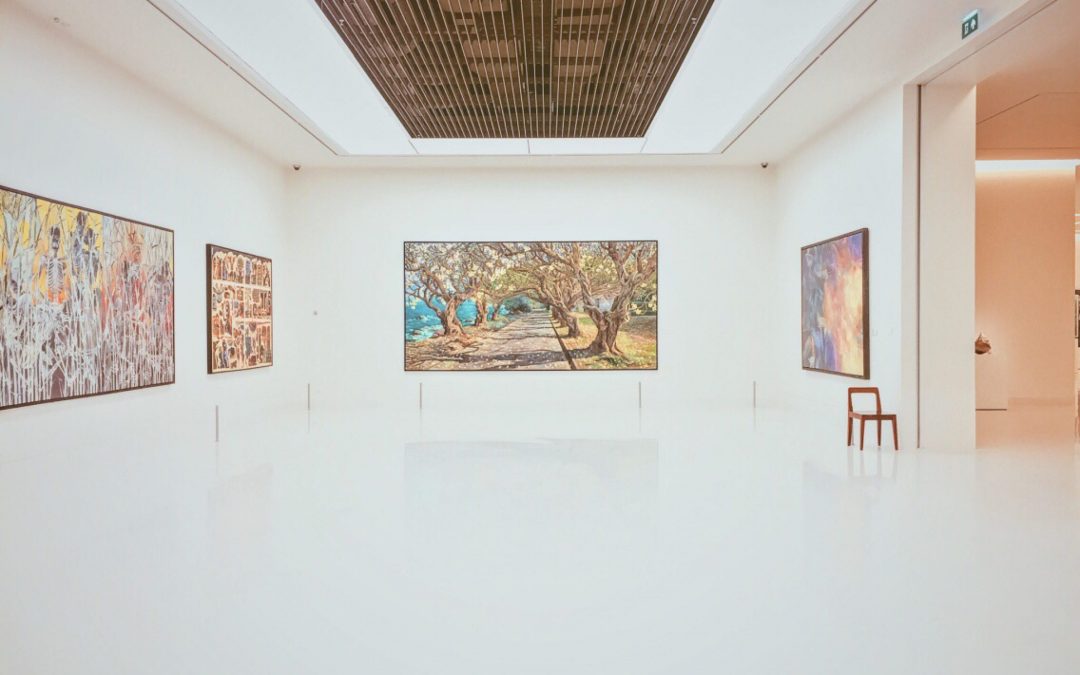
by BCB Property Management | May 16, 2017 | History, New York City
Want to combine your sophisticated affinity for natural history with your childish love of sleepovers and Ben Stiller flics? New York City’s American Museum of Natural History has a solution for adults hankering to bunk beneath the blue whale: a Night at the Museum sleepover series, which has officially returned this spring.
2017 won’t be the first year the AMoNH lets grown-ups stay overnight in the historic museum for a night to remember. This year will be the fourth to celebrate this swanky tradition, but could be the spookiest yet considering the museum’s current Mummies exhibit. Scared of sarcophagi at night? Rest assured that if the museum’s contents were to come to life, the dinosaurs would probably get you first anyway.
As always, the grown-up iteration is classy affair for 21+ adults only. Imagine this: the night begins with a champagne reception and music by the acclaimed 12th Night Jazz Trio in the Theodore Roosevelt Memorial Hall. Guests are free to roam the floor to view dinosaurs, exotic mammals, and more by night and without the usual pack of kids pressing their noses to the glass. Though with champagne in the mix, we can’t guarantee adults won’t do the same.
A delicious buffet dinner along with wine and beer will also be enjoyed by nocturnal explorers, along with a fossil factfinder tour by flashlight and, bringing literal life to the museum, a live-animal special exhibition. After a nighttime snack, cots are provided for a gentle slumber beneath the 94-foot blue whale in the Milstein Hall of Ocean Life. In the morning, you’ll get a light breakfast snack and memories to last a lifetime.
If this sounds too good to be true, you won’t be surprised that the experience comes with a somewhat-hefty price tag. Members pay $300 for admission, non-members pay $350. For some, this may be a big ask—but if you think about all that’s included (food, drinks, museum activities, boarding), plus the fact that proceeds help support the museum, for those who can afford it the benefits are clear.
The first sleepover took place on May 5, and the next will go down on June 30th. For adventurers with disposable incomes who don’t fear the dark, purchase tickets here.
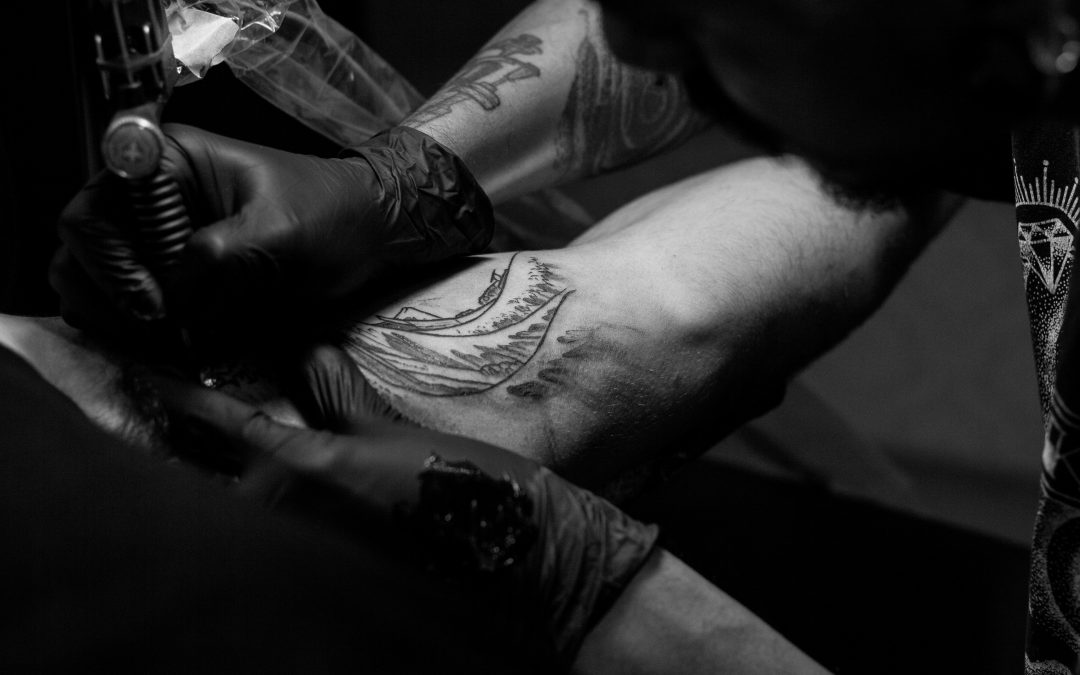
by BCB Property Management | May 1, 2017 | Brooklyn, History, New York City
The history of tattoos – particularly in a city as creative and cosmopolitan as New York – is as colorful as the epidermal artwork itself. As The New York Times notes, denizens of New York are surrounded by advertising, so how could they resist using their own skin as a form of expression?
But tattoos have been inked for centuries – even millennia – all over the world. There is evidence of Native Americans bearing marks upon their skin: “’Indigenous people of North America pricked or scratched the skin with sharpened bones, branches, or needles, then rubbed soot or crushed minerals into the wound as pigment.’” According to Time, “in the mid-18th century, Native American women tattooed themselves to alleviate toothaches and arthritis, similar to acupuncture.” A set of mezzotint portraits titled “The Four Indian Kings” depicts tattooed Mohawk and Mohican leaders circa 1710.
During that century, the word “tattoo” was derived from Captain James Cook’s voyage in the South Pacific, where he encountered Polynesian tribes bearing marks upon their skin. According to the Village Voice, the famous explorer “first introduced the Tahitian word tautau to England.” Cook’s crew also picked up souvenirs from their travels, which they carried back West.
Sailors began to request tattoos signifying important events, like ship names, birth dates, or milestones, “to mark the first time they crossed the equator or rounded Cape Horn or the Arctic Circle. […]The common anchor tattoo was meant to signify stability and to safeguard them from drowning […].” Apparently, the red star logo of Macy’s department store was inspired by the founder’s tattoo, from his days working on a whaling ship.
Tattoo shops catering to maritimers shared space with barbershops, initially in the Financial District, then in the Bowery. Barbers have a history of practicing surgery as well as cutting hair, hence the traditional striped barber pole. According to Untapped Cities, “these storefront ornaments reflected the common belief that hair cutters were “doctors” of the days (blue – veins, red – blood, white – bandages).”
Sailors are in great part responsible for the spread of tattoos, which eventually attained social cachet. The New York elite inked their skin once the practice was made fashionable by British royalty: “Britain’s Prince of Wales (later King Edward VII) had gotten body art during an 1862 trip to Jerusalem, while his sons Prince Albert and Prince George (future King George V) got dragons inked in Japan by Hori Chyo, an artist known as ‘the Shakespeare of tattooing.’”
Tattoos were also a practical necessity. During the Civil War, they took the place of dog tags. In the mid-19th century, professional tattoo artist Martin Hildebrandt inscribed thousands of soldiers – both Union and Confederate – with their names, so that if they fell, their bodies could be correctly identified. Hildebrandt made his shop permanent in the Lower East Side, where tattoos continued to be relevant. In New York, “the first electric rotary tattoo machine was invented in 1891, inspired by Thomas Edison’s electric pen,” by Samuel O’Reilly, and was later improved by Charles Wagner. The practicality of tattoos was again demonstrated in the 1930s, when Social Security numbers were first administered, and people needed help retaining their numbers.
One of Martin Hildebrandt’s best clients was a woman: Nora Hildebrandt showed off over 300 tattoos in the Barnum & Bailey Circus during the late 19th century. Other women eventually owned their own tattoo shops. Mildred “Millie” Hull was the first, opening the Tattoo Emporium in the Bowery in the 1930s. Millie started as a burlesque dancer, and made her appearance all the more exotic by acquiring a number of tattoos, earning the nickname the “‘tattooed lady.’”
Betty Broadbent was almost crowned queen of a beauty pageant at the 1939 World’s Fair in New York, giving female tattoos a broader platform. While Betty was one of the most photographed tattooed women at the time, she was not nearly in the minority. “The New York World, reports the Historical Society, placed the percentage of fashionable NYC ladies who were inked at the turn of the century around three-quarters.” Tattoo artists made house calls to accommodate the popularity of tattoos among women. Winston Churchill’s mother reportedly had a wrist tattoo, easily concealed by bracelets.
Despite its popularity with both women and men, the tattoo industry suffered a setback when in 1961, the New York City Health Department instituted a ban on the practice. Tattoos were blamed for “an alleged series of blood-borne Hepatitis-B cases linked to Coney Island tattoo parlors in the late 1950s.” However, according to Gothamist, other reasons may have weighed on the decision: “members of the public recall other motivations for the ban, including the mayor’s desire to clean up the city in preparation for the 1964 World’s Fair, a city health inspector’s personal vendetta against one of the Bowery tattooers, and even a scare regarding contaminated shell fish.”
The ban simply drove the tattoo business underground. Artists opened up shop in apartments and arranged signals in case of a raid, as with Prohibition. Tattoo parlors operated illegally in the 70s, like Mike Bakaty’s famous Fineline, considered the oldest tattoo shop in New York. Mayor Giuliani ended the ban in 1997, but tattoos had never really left New York, and the art had only become more international.
To learn more about the history of tattoos and the special role New York played in their popularity, check out the exhibit “Tattooed New York” at the New York Historical Society. Or visit the South Street Seaport Museum to learn about “the most tattooed man in America”: “The Original Gus Wagner: The Maritime Roots of Modern Tattoo.”





